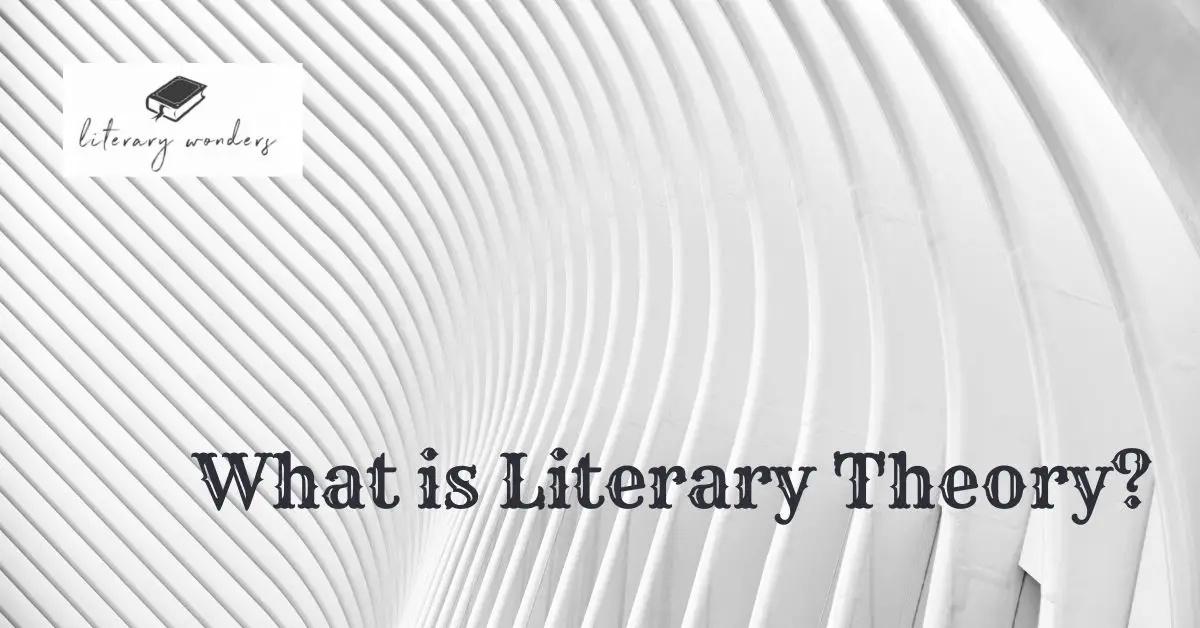Introduction
Literary theory encompasses the philosophies and principles we may use to interpret a text. This is not an easy task, as many different perspectives exist. For example, some people would say that one should see the text as symbolic or metaphorical. In contrast, others may argue that this exact text is intended to portray its subject matter literally. These interpretations can be polar opposites, but they still have their place in understanding literature.
We need to understand these ideas, so we can make informed decisions about how we view the texts before us. To do this, it is important for us first to understand what makes up literary theory and literary criticism.
An Introduction to Literary Criticism
Literary criticism provides the reasoned consideration of literary issues and works and applies as a condition to any argumentation about literature, whether or not specific works are analyzed.
There are numerous schools of literary criticism, and they have different methods. However, all consider how literary language reflects the reader’s own culture and values and how the reader must decide which aspect of the work to focus on.
By applying the ideas of one or more schools of literary criticism to a piece of literature, you can gain an understanding of its meaning that goes beyond mere plot summary and characterization analysis.
How to Analyze Literature
In order to analyze literature, the theorist must first think about what the work is trying to do. This can be accomplished by identifying its themes or intentions, which is done by examining elements like setting, plot, character development, and dialogue. A secondary technique for understanding a text can be determined by examining how it reflects the author’s particular perspective. Other things theorists look at are rhetoric and style to determine how language contributes to the meaning of a literary work.
There are many ways in which literary theory can be used in analyzing texts. The simplest way to apply theory to analyzing literature is by looking into its intended message(s) and themes. For instance, asking what is being said and how it is being said. The simplest method would then be to find every example of how a theme shows up in a piece This can be done by making inferences about authors’ perspectives or other aspects of the plot related to cultural knowledge rather than just individual experience.
Ideology critique with feminist theory
Male-dominated academia has an issue with objectivity, shown in the dismissal or disregard for perspectives outside of the hegemonic ideal. Western society is built on the idea that white men are at the top. Unfortunately, this perspective does not change when it comes to academia. I argue that we need critical theory to understand how to read texts from a non-dominant viewpoint. Feminist theory enables us to work towards more equality for all genders through our readings and writings about literature. We can also employ gender studies as well as race and postcolonial studies for us to move away from reading with a white heterosexual male gaze by creating scholarly communities in which these perspectives are embraced as equals with those who would rather ignore them.
The power of literary theory lies in its ability to empower readers by teaching them skills necessary for understanding literature from many different viewpoints and using approaches such as ideology critique, feminist theory, and gender studies to analyze texts.
Formalism and Structuralism with Semiotic Theories
`Formalism is a school of literary criticism that focuses on the artistic elements of literature, emphasizing their importance in making meaning. Structuralism is an approach in semiotics (a term referring to the study of signs) that examines how texts are formed. In practice, formalism and structuralism combine to create detailed analyses of text based on artistic elements such as perspective, setting, or imagery.
Semiotic theories support these examinations by providing insight into how texts are constructed from smaller components like signifiers. The act of analyzing literature closely for specific features is called close reading. You can learn more about the author’s style and technique by examining individual sentences, word choice, tone, and symbolism within a work’s content.
Close readings require attention to detail, which is why they are most often associated with highbrow works of fiction rather than poetry, which may not be scrutinized in this way. Close readings also provide helpful information about how authors use symbols and hidden meanings to convey messages.
Conclusion
To sum up, literary theory is indispensable to understand any literary piece. It not only provides us various lenses to uncover the hidden message of the text, but also lead us to dig the writer’s intention of writing that specific text.
Suggested Readings
Origin and Development of New Criticism
In Maya Angelo’s poem “Caged Bird,” what does the cage represent?

